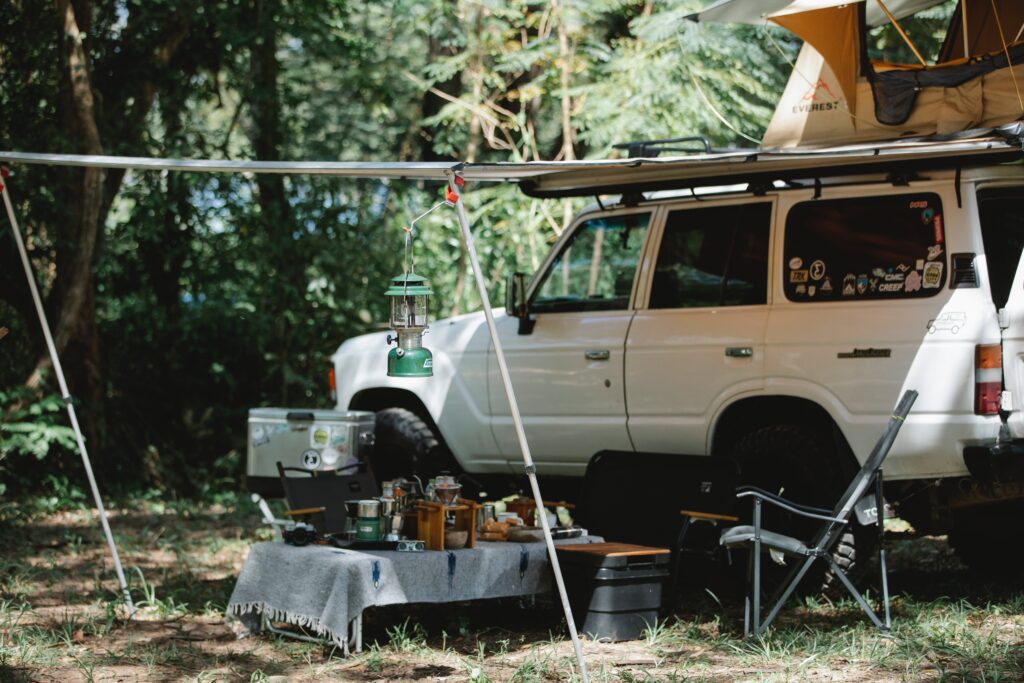How to Make a Solar Oven DIY with Household Items

Are you looking for a fun and eco-friendly way to harness the power of the sun? Look no further! In this article, you will find a step-by-step guide on how to build a functional solar oven using items you already have at home. Whether you’re looking to cook in a new way, live off the grid or need to make a DIY solar oven to survive then this guide is for you. Get ready to make a handy project and embark on a sustainable solar powered cooking adventure!
A Step-by-Step DIY Guide to Building a Solar Oven Using Household Items
Are you interested in harnessing the power of the sun to cook your food? Look no further than your own backyard! With just a few household items, you can create your very own solar oven. In this step-by-step guide, we will walk you through the process of building a functional solar oven that can cook your favorite meals using the sun’s energy. So gather your materials and let’s get started!
Materials You Need to Make a Sun Powered DIY Oven
Before we begin, let’s gather all the materials you need for this project. Here’s a list of what you’ll need:
- Cardboard box: Find a suitable cardboard box that is large enough to accommodate your cookware.
- Aluminum foil: This will be used to create a reflective surface inside the solar oven.
- Tape: Use tape to secure various components of the solar oven.
- Black construction paper: This will be used to line the bottom of the box, absorbing heat and aiding in cooking.
- Scissors: You’ll need scissors to cut cardboard panels and other materials.
- Ruler: Use a ruler to measure and mark various dimensions.
- Plastic wrap: Cover the solar oven with plastic wrap to create a greenhouse effect.
- Thin wooden dowels: These will serve as handles for the lid of the solar oven.
- Oven thermometer: Use an oven thermometer to monitor the temperature inside the solar oven.
- Oven-safe cookware: You’ll need suitable cookware to place your food inside the solar oven.
Now that we have all the materials we need, let’s proceed to the first step!
If making a solar oven seems like a daunting task then check these emergency camping stoves on Amazon today!
1. Prepare the Box for Your Stove
The first step in building your solar oven is to prepare the cardboard box. Here’s what you should do:
- Select a suitable cardboard box: Choose a box that is large enough to accommodate your cookware, but not too large that it becomes difficult to heat.
- Seal any holes or gaps with tape: Inspect the box for any holes or gaps and seal them with tape to ensure that heat stays trapped inside.
- Cut off the top flaps of the box: Remove the top flaps of the box to create an openable lid.
- Measure and mark the center of one side: Use a ruler to find the center of one side of the box and mark it. This will be useful later in the construction process.
2. Creating the Reflective Surface
Now that the box is prepared, it’s time to create the reflective surface inside the solar oven. Follow these steps:
- Cover the interior sides with aluminum foil: Cut sheets of aluminum foil to fit the interior sides of the box. Use tape to secure the foil in place.
- Smooth out any wrinkles or creases: Make sure the foil is smooth and free of any wrinkles or creases to maximize reflection.
- Secure the foil with tape: Use tape to secure the foil firmly in place, ensuring that it doesn’t come off during use.
- Cover the bottom of the box with black construction paper: Line the bottom of the box with black construction paper. The black surface will absorb heat and aid in cooking.
Creating a reflective surface is essential as it helps focus the sun’s rays into the cooking chamber, increasing the oven’s efficiency.
3. Build the Insulation Layer
To maximize the heat inside the solar oven, we need to build an insulation layer. Follow these steps:
- Cut cardboard panels to fit the interior sides: Measure and cut cardboard panels that fit the interior sides of the box. These panels will help insulate the oven.
- Cover the panels with aluminum foil: Similar to the reflective surface, cover the panels with aluminum foil to enhance reflection.
- Attach the panels to the sides using tape: Attach the foil-covered panels to the sides of the box, ensuring a snug fit. Use tape to secure them in place.
- Leave a small opening to insert the oven thermometer: Cut a small opening on one side of the box to insert the oven thermometer. This will allow you to monitor the temperature inside the solar oven while cooking.
The insulation layer plays a crucial role in preventing heat loss and maintaining a consistent temperature inside the oven.
4. Create the Lid for Your Solar Oven
Now it’s time to create the lid for the solar oven. Follow these steps:
- Cut out a cardboard panel slightly larger than the box opening: Measure and cut a cardboard panel that is slightly larger than the opening of the box. This will serve as the lid.
- Cover the panel with aluminum foil on one side: Place aluminum foil on one side of the lid panel, ensuring a smooth surface for reflection.
- Attach thin wooden dowels around the edges as handles: Attach thin wooden dowels around the edges of the lid panel to serve as handles. These handles will allow you to easily open and close the lid.
- Attach the lid to the box using tape: Use tape to attach the lid to the box, ensuring a tight seal.
The lid is essential for trapping heat inside the solar oven and maintaining the desired cooking temperature.
5. Construct the Cooking Area
With the basic structure of the solar oven complete, it’s time to create the cooking chamber. Follow these steps:
- Place oven-safe cookware inside the box: Choose oven-safe cookware to place your food inside the solar oven. Ensure that there is enough space for air circulation around the cookware.
- Ensure there is enough space for air circulation: Make sure there is enough space between the cookware and the sides of the box for proper air circulation.
- Cover the box with clear plastic wrap: Wrap the entire solar oven with clear plastic wrap to create a greenhouse effect, trapping heat inside.
- Create an opening for fresh air at the bottom: Leave a small opening at the bottom of the box to allow fresh air to enter. This will help regulate the temperature inside the solar oven.
The construction of the cooking chamber finalizes the structure of the solar oven, ready for cooking!
6. How to Position the Solar Oven
Now that your solar oven is complete, it’s time to position it for optimal sunlight exposure. Here’s what you should do:
- Place the solar oven in an area with maximum sunlight: Find a spot in your yard or balcony that receives the most sunlight throughout the day.
- Adjust the angle of the oven to face the sun directly: Position the solar oven in such a way that it faces the sun directly. This will ensure maximum heat absorption.
- Use a reflector if needed to enhance sunlight exposure: If you have trouble getting enough sunlight, consider using a reflector to direct additional sunlight towards the solar oven.
- Monitor the oven temperature using the oven thermometer: Keep an eye on the oven thermometer to ensure that the temperature inside the solar oven is reaching the desired cooking temperature.
Positioning the solar oven correctly is crucial for maximizing the cooking efficiency and ensuring optimal results.
7. Cooking with the Solar Oven
Now comes the exciting part – cooking with your solar oven! Here’s what you need to do:
- Preheat the oven by positioning it in direct sunlight: Before placing your food inside the solar oven, preheat it by allowing it to sit in direct sunlight for some time.
- Place the prepared food inside the cooking chamber: Once the oven is preheated, carefully place your prepared food inside the cookware and place it in the cooking chamber.
- Close the lid securely and ensure a tight seal: Close the lid of the solar oven and make sure it is securely sealed to prevent heat loss.
- Regularly check the oven temperature and cooking time: Monitor the oven thermometer to ensure that the temperature remains constant and check the cooking time based on the recipe you are following.
Cooking with a solar oven may require some adjustments to traditional cooking methods, but with practice, you’ll be able to master the art of solar cooking.
8. Safety Precautions for Solar Cooking
While using a solar oven is a rewarding experience, it’s essential to follow safety precautions. Here are a few to keep in mind:
- Do not touch hot surfaces without proper protection: The solar oven, especially the cookware, can become extremely hot during the cooking process. Always use oven mitts or heat-resistant gloves when handling hot surfaces.
- Use oven mitts or heat-resistant gloves when handling: To avoid burns, make sure to wear oven mitts or heat-resistant gloves when handling the solar oven and its components.
- Keep children and pets away from the solar oven: To prevent accidents, ensure that children and pets are kept at a safe distance from the solar oven while it is in use.
- Avoid using flammable materials near the oven: Keep flammable materials away from the solar oven, as the high temperatures inside the oven can pose a fire hazard.
Following these safety guidelines will ensure a safe and enjoyable solar cooking experience.
9. Enjoy Your Solar-Cooked Food
Congratulations! You have successfully built and cooked with your very own solar oven. Now it’s time to reap the delicious rewards. Here are a few final tips:
- Carefully remove the cooked food from the solar oven: Use oven mitts or heat-resistant gloves to remove the cookware from the solar oven, as it will still be hot.
- Allow it to cool before serving: Let the food cool down for a few minutes before serving to ensure it is safe to eat.
- Experiment with different recipes and cooking times: Solar cooking allows for experimentation, so don’t be afraid to try out different recipes and cooking times to discover new flavors.
- Share your solar cooking experience with others: Spread the joy of solar cooking by sharing your experience with friends and family. They might be inspired to build their own solar ovens and join in the fun!
Now sit back, relax, and savor the satisfaction of enjoying a meal cooked using the power of the sun. Bon appétit!



